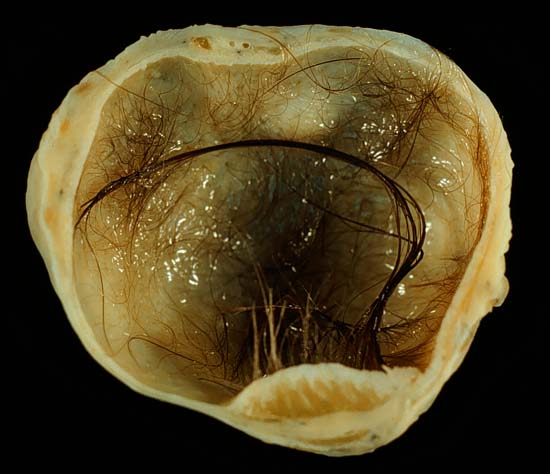Teratoma With Malignant Transformation
Watchlist
Retrieved
2022-04-26
Source
Trials
—
Genes
BCL10,
CTNNB1,
KIT,
STK11,
POU5F1,
NANOG,
SETBP1,
FGFR3,
POU5F1P4,
POU5F1P3,
ATN1,
SOX2,
IGHV1-12,
TP53,
TRRAP,
HSP90B1,
PLSCR4,
KLF4,
DMRT1,
AFP,
RPE65,
SRRM2,
GRN,
SLC22A3,
HDAC1,
KRAS,
CKAP4,
MYC,
PSMD10,
PTBP1
BCL10,
CTNNB1,
KIT,
STK11,
POU5F1,
NANOG,
SETBP1,
FGFR3,
POU5F1P4,
POU5F1P3,
ATN1,
SOX2,
IGHV1-12,
TP53,
TRRAP,
HSP90B1,
PLSCR4,
KLF4,
DMRT1,
AFP,
RPE65,
SRRM2,
GRN,
SLC22A3,
HDAC1,
KRAS,
CKAP4,
MYC,
PSMD10,
PTBP1,
TP63,
UVRAG,
PNO1,
RBMS3,
CDX2,
MAK16,
BMP2,
DND1,
LIN28A,
MSC,
NOG,
PRPF4,
TIPRL,
MBD2,
ATOH8,
PROM1,
FSD1L,
CREG1,
LHX2,
ZFP42,
REXO1,
NANOS3,
MVP,
UTF1,
GFI1B,
LBX1-AS1,
HMGA2,
XIST,
MIR367,
MIR373,
CHAC2,
MIR375,
SYCE1L,
NKX2-1,
PLAA,
KLF2,
KLHL1,
KAT5,
CHD7,
FBXW7,
LSM2,
IMP3,
MKS1,
ESRP1,
DDX4,
DCDC2,
GMNN,
DNMT3L,
GAS5,
TGFB1,
PRDM14,
FSD1,
METTL8,
CBX5,
SIRT1,
MESD,
TDGF1P6,
CBX3,
ASXL3,
ITFG1,
GADD45G,
HPSE,
NES,
TIMP1,
AAVS1,
TFAP2C,
ERCC1,
ABCC2,
CSE1L,
CSF2RA,
DAZL,
DHCR24,
EGR1,
ELF4,
ESR1,
TCF12,
GPC4,
FGF2,
FHIT,
FOXO3,
FMOD,
NR5A1,
FUT1,
CISH,
CDKN2B,
CDKN2A,
CDH1,
NR0B1,
ALPP,
ALPG,
BIRC5,
AQP4,
AR,
ATM,
BAX,
BCL2,
BRCA1,
BRAF,
CALD1,
CD1A,
CD34,
CDK1,
GABPA,
GATA2,
GATA6,
MRC1,
NHS,
NOTCH1,
PGM1,
PIN1,
PMAIP1,
PTEN,
RB1,
SLC3A2,
SLC5A5,
ACAT1,
SNAI1,
SNRPN,
SRY,
SSTR2,
ZEB1,
NFE2L2,
MMP9,
GDNF,
KITLG,
GFRA1,
GSTP1,
HIF1A,
MNX1,
HMGA1,
IL3,
JAG2,
KRT10,
KRT18,
LNPEP,
EPCAM,
MAT1A,
MCL1,
ME1,
MEFV,
PSC
Drugs
Allogeneic multi-virus specific T lymphocytes targeting BK virus, cytomegalovirus, human herpesvirus-6, Epstein Barr virus and adenovirus,
haematopoietic stem cells and blood progenitors umbilical cord-derived expanded with (1R, 4R)-N1-(2-benzyl-7-(2-methyl-2H-tetrazol-5-yl)-9H-pyrimido[4,5-b]indol-4-yl)cyclohexane-1,4-diamine dihydrobromide dihydrate
Registered!

A teratoma with malignant transformation (TMT) is a tumor that develops from germ cells when they grow and divide abnormally, forming a mass. Approximately 6% of teratomas develop into TMTs by a process called malignant transformation, when some of the cells in the teratoma become cancerous. TMTs can occur anywhere in the body, but most are located in the testes in men or ovaries in women. The cause of TMT is unknown. Treatment may include surgery and chemotherapy.